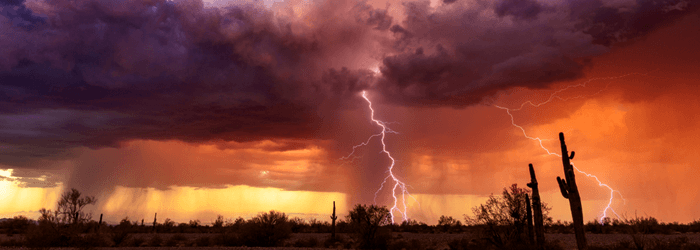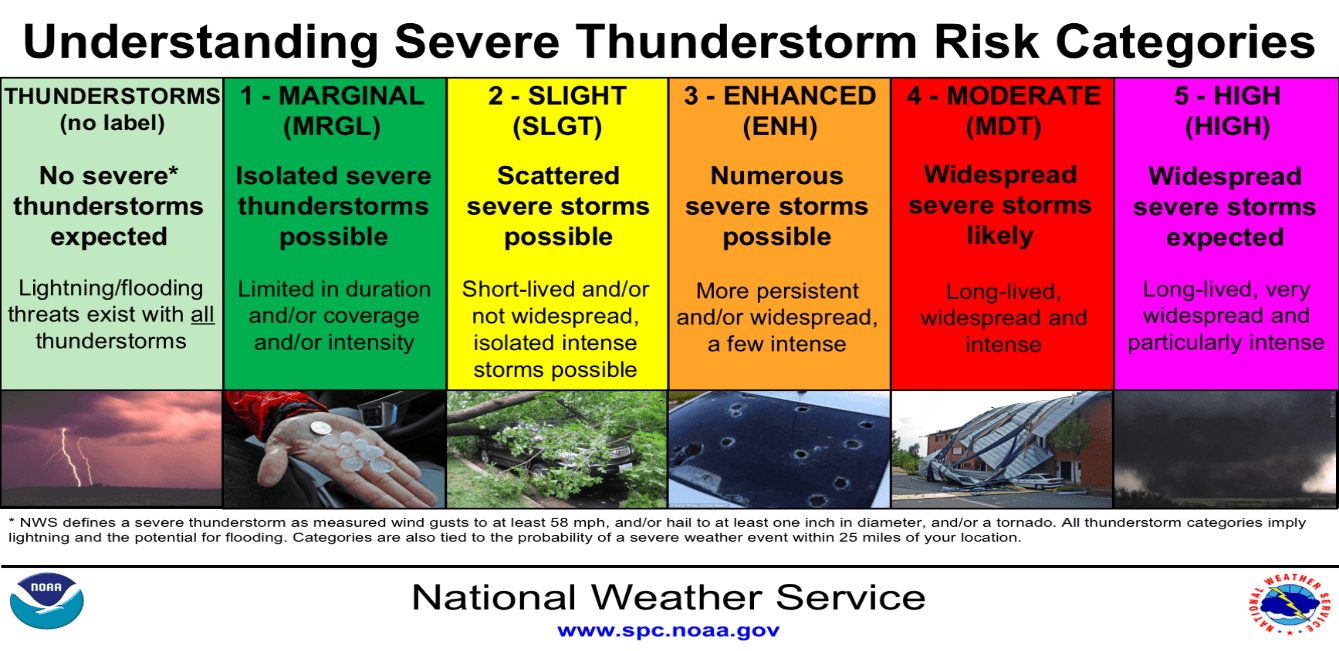We are in the time of year Arizonans call the “monsoon season.” The name is redundant because “monsoon” is considered a season. In any case, the season generally begins June 15th and ends September 30th.
The northern parts of Arizona may not see the seasonal effects until the first week of July. According to the National Weather Service, the monsoon is a weather pattern characterized by a wind shift from a predominant flow from the west to a southern flow. This brings tropical moisture up through Mexico and into the Southwest.
This change of wind direction is caused by the intense heat on the land that causes wind shifts at the lower atmospheric levels. This, in turn, brings much-needed moisture to our area. So, the old saying that “it needs to get really hot before the start” is quite true.
Thunderstorm vs. Monsoon
We often confuse a thunderstorm with a monsoon. The National Weather Service and the Arizona State Climate Office make a distinction here. The monsoon is characterized as a seasonal weather pattern.
According to the Arizona State Climate Office, the monsoon is not a thunderstorm but can help build them. Thunderstorms are more likely to occur during the monsoon.
Monsoon storms come in a variety of sizes and intensities, as indicated on the chart below:
These storms can be sporadic throughout the state and even in the same city. There are instances where one side of the street sees rain and the other does not. Our inconsistent rainfall can leave some areas of our state dry whereas others may experience the lush growth that can follow a bountiful rainfall.
Rainfall totals vary across the state, and each year is different. Check out the totals in Phoenix and Tucson dating back to 1896!
These two charts indicate the rainfall differences between Flagstaff and Prescott each year since 2011.
Our monsoon season brings much-needed rain. But it can also be dangerous!
Be Aware
Rainfall
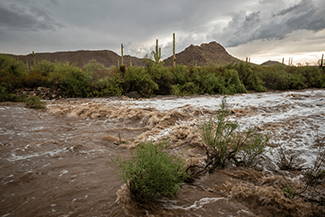 Rainfall can be heavy during a storm. It can dump several inches in a short period. This leads to flooding in the immediate area and the washes, ditches, and drainages that lead this water downstream.
Rainfall can be heavy during a storm. It can dump several inches in a short period. This leads to flooding in the immediate area and the washes, ditches, and drainages that lead this water downstream.
Flooding
Flooding can occur without much notice. The sporadic nature of the storms can take an area that is sunny and dry and turn it into the drainage conduit for an area deluged miles away.
Road Crossing
Many of our roads are designed to be what is known as ”low water crossings.” This means they lead through a wash. A flood that begins miles upstream could be just around the bend. Slow down when approaching a low water crossing or crossing a wash or arroyo. Look carefully. Move quickly across the dry area.
The Arizona Flood Warning System collects data statewide and reports flood conditions as close to real-time as possible.
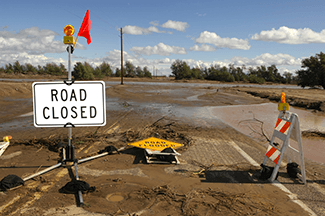
Note: There can be delays in the warning.
Never try crossing a road when water is present, especially at a dirt wash. When wet, the soil level becomes liquid and much deeper than it appears. This can lead to getting yourself or your vehicle stuck and potentially swept away.
Hail
Monsoon thunderstorms can and do produce hail along with rain. Hailstones can be as large as a baseball or as small as a pea. Hail can cause a lot of damage, especially from large hailstones.
Your roof is extremely vulnerable to hail damage, and there is little you can do to prevent that. Consider placing outdoor items that are susceptible to hail damage, such as yard furniture, art, or anything stored outside, in a protected area while not in use. A covered patio, garage, or storage shed can suffice.
If you are in your car and can’t get to cover, stay inside your vehicle. Use a coat, towel, or anything in arm’s reach to cover your face if the hail is so severe that it might break your car’s windows.
Lightning
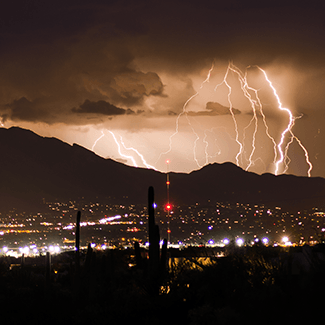 Thunder is the sound lightning makes. So, if you hear thunder, lightning has already struck. Stay inside your home or any building, as that is the safest place. If in your car, stay inside until the storm passes.
Thunder is the sound lightning makes. So, if you hear thunder, lightning has already struck. Stay inside your home or any building, as that is the safest place. If in your car, stay inside until the storm passes.
Wind
Typical monsoon storm winds can vary from 20 to 110 miles per hour (mph). Winds of 20 mph will barely blow over your umbrella, but 110 mph could throw your umbrella into the next county (well, the next yard, at least)!
Wind speeds can increase substantially in what is known as a “microburst.” A microburst is a localized column of air (downdraft) within a thunderstorm and is less than or equal to 2.5 miles in diameter.
Microbursts can cause extensive damage. In some instances, they can be life-threatening. A microburst can reach wind speeds above 150 mph. Building codes require protection from winds between 90 and 110 mph. Homes hit by a microburst can sustain damage similar to that caused by a tornado.
Monsoon rain brings much-needed moisture. In some parts of Arizona, it provides 40 to 50 percent of our annual precipitation. It is the way it comes that can make it a hazard!
Be aware and be prepared for the next monsoon!
###
Homeowner Handbook | #MonsoonStorms
PODCAST
Monsoon Season is tricky. Storms can dump heavy rain, produce high winds, create flash flooding, cause power outages, and lightning could strike one area, while an area nearby could go untouched. This Weekly To Do is homeowner preparation for whatever monsoon season has to throw at us! Plus, Dr. Sky joins us to talk about how Arizona could see a rare sight: The Northern Lights! We talk to some homeowners and answer their questions too!
Podcast Archive With Expanded Content and Resources
PHOTO CREDIT
- Weather.gov
- National Weather Service
- Shutterstock

